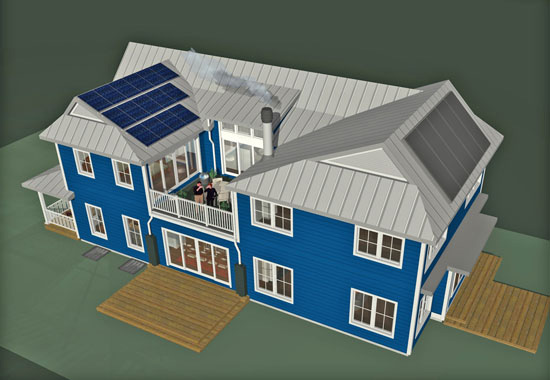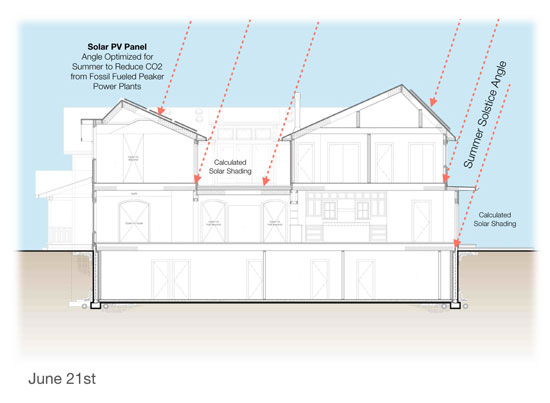Sustainability, Modular Design, and BIM
Kipnis Architecture Planning: Mainstream Sustainability in Practice
A very successful small firm in Evanston, Illinois, is a great example of putting mainstream sustainability and BIM together into practice. Nathan Kipnis, AIA, LEED BD C is the principal of Kipnis Architecture Planning (KAP). His firm has been recognized nationally for its protracted commitment to bioclimatic and green architectural design on residential and commercial projects since the 1980s. It is the firm’s stated belief that architectural design excellence does not need to be sacrificed for environmental principles. “On the contrary, green design expands the possibilities for new and innovative architectonic forms, construction methods, and material uses,” Kipnis points out. As an early signatory to the AIA 2030 Commitment and with an entirely LEED-accredited staff, KAP is dedicated to significantly reducing each building’s CO2 emissions. To accomplish this, every project is reviewed throughout the design process to determine how best to incorporate energy efficiency, green materials, and advanced construction methods. This integrated approach helps to lessen the impact of a building throughout its entire life cycle, from the manufacture and delivery of material, through construction, during the useful life of the building, and at its end. Pre-manufactured components and products of various types play directly into this approach.
As part of KAP’s normal design process, multiple options and schemes are assessed. Typically, it starts with a baseline design and then compares individual components or systems using whole-building computer modeling. As the best-performing solutions are determined, the designers can make incremental design decisions based on the impact of each component as demonstrated in the modeled performance. They point out that the real opportunities to find this out are at the beginning of the design process, not later. By understanding the impacts early, adjustments can be made easily and efficiently to optimize the design. As a small firm, KAP has found no barriers to employing this process since there are plenty of easy-to-use computer programs available at little or even no cost.
The firm’s overall goal is to provide high-quality, comprehensive architectural services based on its commitment to sustainability, creativity, technical excellence, and attention to detail. It regards each project as a unique challenge to create a design that is matched to the specific climate where it is located, as well as the client’s particular requirements. The firm does not strive to emulate any single design style, rather, the image and detailing evolve during the design process. KAP feels equally adept at providing cutting-edge designs or ones that are historically influenced.











